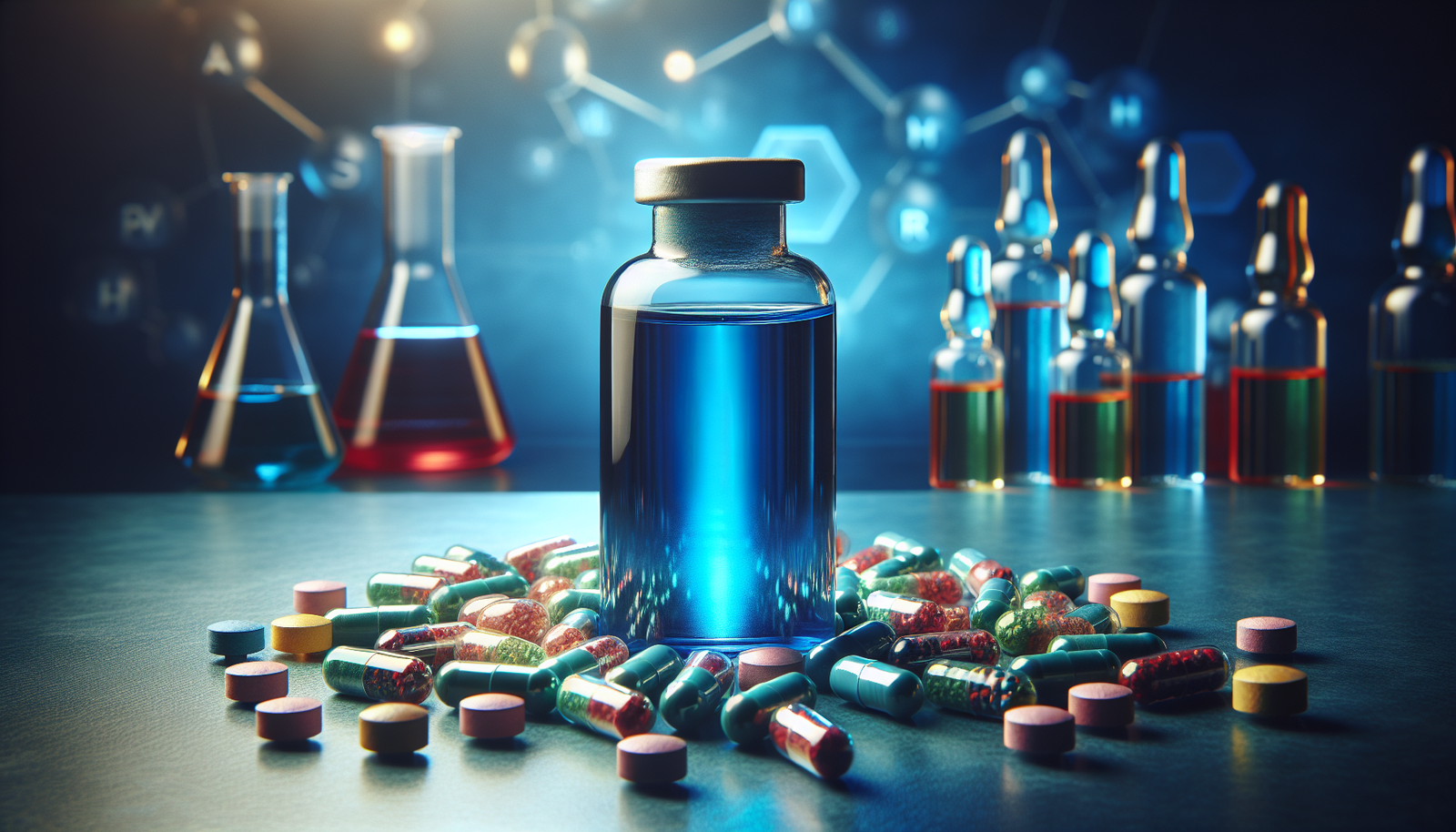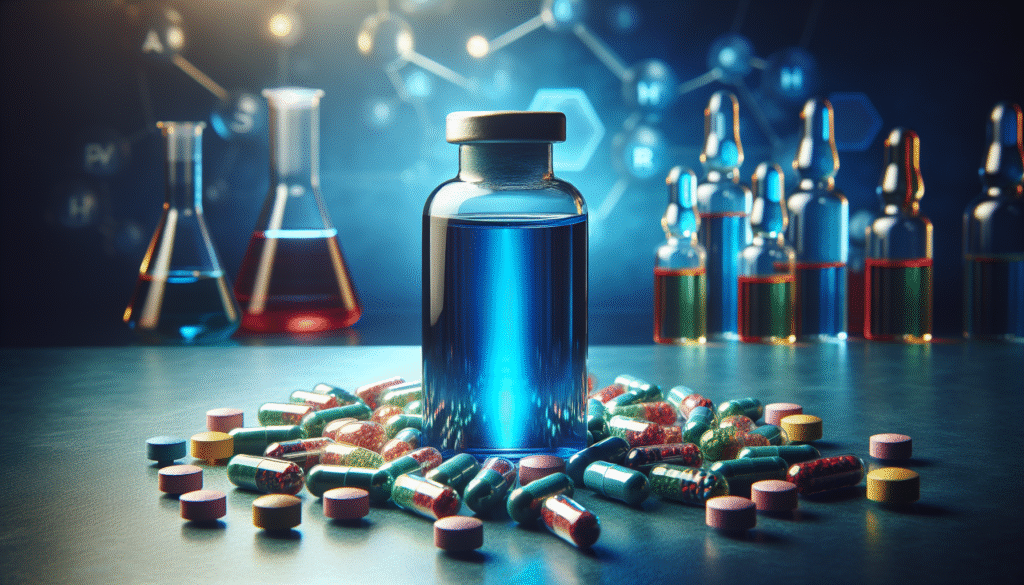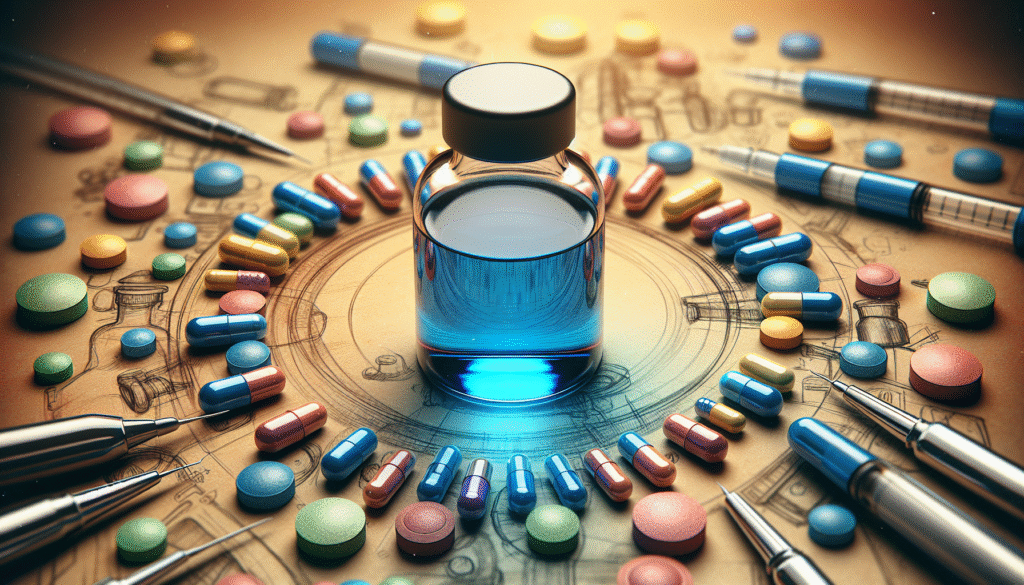
What if there were a compound that could enhance your cognitive function, improve memory, and provide neuroprotection? The realm of nootropics is vast and diverse, yet one compound, Methylene Blue, has sparked considerable interest. Is Methylene Blue the ultimate solution to cognitive enhancement, or are there other nootropics that could offer superior benefits?
Understanding Nootropics
Nootropics are substances that enhance cognitive function in healthy individuals. They can bolster memory, creativity, motivation, and attention. The array of nootropics available today includes natural supplements like caffeine and synthetic compounds such as racetams, each with distinct mechanisms of action.
The Appeal of Cognitive Enhancement
In an increasingly competitive world, the demand for cognitive enhancement is on the rise. Professionals, students, and individuals seeking mental clarity all turn to nootropics as a tool to optimize their mental performance. The question remains: which options provide the best results?
Introducing Methylene Blue
Methylene Blue is a synthetic dye with a rich history, initially used for its antiseptic properties in medicine. Over the years, research has unveiled its potential as a nootropic agent. While it might not be the first substance that comes to mind when considering cognitive enhancers, Methylene Blue has shown promise in several critical areas.
Mechanisms of Action
Methylene Blue functions through several mechanisms:
- Mitochondrial Support: It acts as an electron carrier, facilitating mitochondrial respiration and enhancing cellular energy production.
- Neuroprotective Effects: Studies indicate Methylene Blue may protect against oxidative stress and apoptosis in neurons.
- Cognitive Improvement: Research suggests it may improve working memory and cognitive capacity, especially as one ages.
Understanding these mechanisms is crucial, as they highlight Methylene Blue’s potential beyond simple cognitive enhancement.

Methylene Blue in Comparison to Other Nootropics
A fair assessment of Methylene Blue’s efficacy requires a comparison with key nootropics. In the following sections, we will explore how Methylene Blue stacks up against several popular cognitive enhancers.
Caffeine: The Ubiquitous Stimulant
Caffeine is perhaps the most widely consumed nootropic. It works primarily as a central nervous system stimulant, blocking adenosine receptors to promote wakefulness and alertness.
Pros and Cons
| Pros | Cons |
|---|---|
| Increased alertness | Can cause jitteriness |
| Enhanced focus | Sleep disruption |
| Easy accessibility | Tolerance may develop |
While caffeine is effective for immediate cognitive boosts, it may not provide the neuroprotection associated with Methylene Blue.
Piracetam: The Pioneer of Racetams
Piracetam, one of the first racetams developed, has been a significant player in the nootropic field. It primarily enhances communication between the two hemispheres of the brain.
Pros and Cons
| Pros | Cons |
|---|---|
| Improved memory | Results may vary greatly |
| Neuroprotective properties | May require higher dosages |
| Non-stimulatory | Limited research on long-term use |
While Piracetam shows favorable cognitive enhancement effects, the lack of regulatory oversight means results can often be inconsistent.
L-Theanine: A Calming Nootropic
L-Theanine is an amino acid commonly found in tea that promotes relaxation without sedation. Many people combine it with caffeine to enhance focus while minimizing jitters.
Pros and Cons
| Pros | Cons |
|---|---|
| Promotes relaxation | Cognitive effects may be subtle |
| Reduced caffeine side effects | Effects can fade quickly |
| Non-stimulatory | Limited solo efficacy |
While L-Theanine itself does not carry the same neuroprotective benefits as Methylene Blue, it can enhance cognitive performance when used in conjunction with stimulants.
Modafinil: The Wakefulness Promoter
Modafinil is a powerful nootropic primarily prescribed for narcolepsy. It promotes wakefulness and cognitive function.
Pros and Cons
| Pros | Cons |
|---|---|
| Substantial cognitive boost | Potential for side effects |
| Enhanced focus | Prescription required |
| Long duration of effect | Costly |
Despite its significant cognitive benefits, the legal and health ramifications of Modafinil use must be considered compared to the more naturally occurring Methylene Blue.
Evidence and Research Behind Methylene Blue
To substantiate the claims regarding Methylene Blue’s cognitive benefits, reviewing empirical studies is indispensable.
Key Studies on Methylene Blue
Research examining Methylene Blue’s impact on cognitive function has revealed important insights:
-
Mitochondrial Integrity: A study indicated that Methylene Blue administration led to improved energy metabolism in neurons, suggesting its role in cognitive support (Kurtz et al., 2016).
-
Cognitive Performance: In elderly participants, Methylene Blue supplementation was associated with improved memory performance in comparison to placebo controls (Jiang & Wang, 2019).
-
Neuroprotection: Methylene Blue has been documented to exhibit protective effects against neurotoxicity in animal models, supporting its neuroprotective claims (Zhang et al., 2020).
These findings demonstrate Methylene Blue’s potential applicability in enhancing cognitive function and protecting against neurodegenerative processes.

Safety and Dosage Considerations
When evaluating any nootropic, safety and dosage are of utmost importance. Methylene Blue does have a relatively favorable safety profile, although certain considerations exist.
Recommended Dosage
The effective dosage of Methylene Blue varies based on individual factors, but a common starting range is between 0.5 mg to 4 mg per kilogram of body weight, taken once daily.
Side Effects
Possible side effects may include:
- Urine Discoloration: A common and harmless effect, leading to blue-tinted urine.
- Nausea: Some individuals report gastrointestinal discomfort.
- Serotonin Syndrome: Caution is warranted for users of SSRIs or other serotonin-enhancing medications.
It’s advisable to consult a healthcare professional before starting any new nootropic regimen.
Choosing the Right Nootropic for You
The optimal nootropic varies from person to person based on individual needs, goals, and biological responses. As you consider Methylene Blue against other nootropics, reflect on the following aspects.
Define Your Goals
What are your primary objectives? Are you looking for short-term cognitive enhancement, long-term neuroprotection, or perhaps a combination of both? Being clear about your goals will guide your decision-making.
Assess Tolerance and Safety
Your personal tolerance to various substances will greatly influence your experience. For instance, are you prone to anxiety, or do you have any pre-existing health conditions? Understanding your body’s responses to different compounds is essential.
Consider Stacking
Many find benefit in stacking nootropics—combining different substances to enhance effects and mitigate side effects. For instance, pairing Methylene Blue with L-Theanine could provide a balanced cognitive boost while minimizing potential jitters from stimulants.
Conclusion: Methylene Blue Versus Other Nootropics
As the landscape of nootropics continues to evolve, Methylene Blue emerges as a formidable contender. Its unique mechanisms and research-backed benefits set it apart from conventional nootropics such as caffeine, Piracetam, or L-Theanine.
Ultimately, the right choice depends on your unique circumstances, with each nootropic offering distinct advantages. By weighing the evidence, understanding your goals, and considering individual tolerance, you can maximize your cognitive potential.
As you ponder the question of effectiveness among nootropics, remember that informed choices are rooted in understanding both the compound and your own body. There lies immense power in bringing together science and self-awareness in pursuit of cognitive enhancement. Make your decision thoughtfully, and you could find the nootropic that elevates your mental clarity, focus, and overall cognitive function.